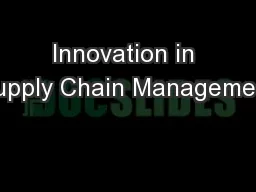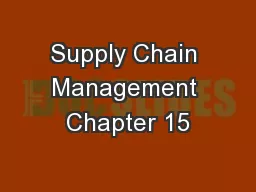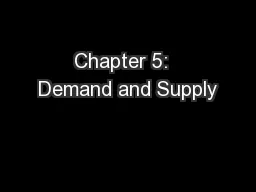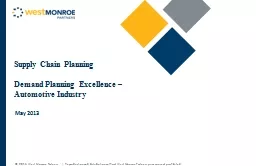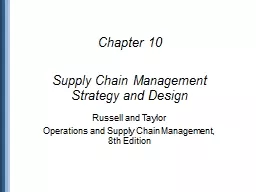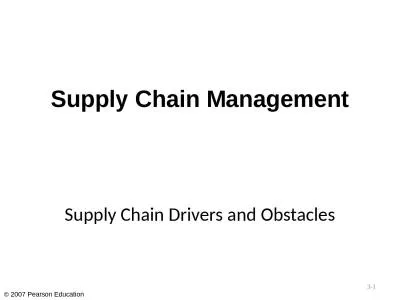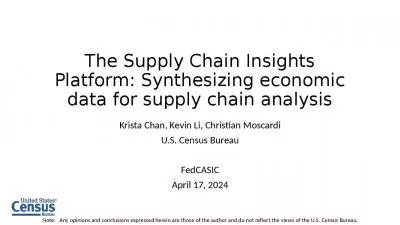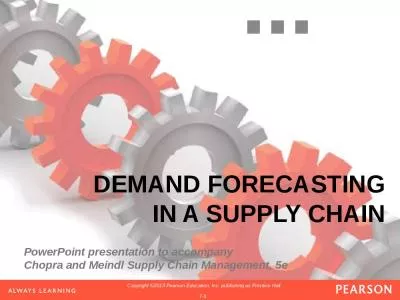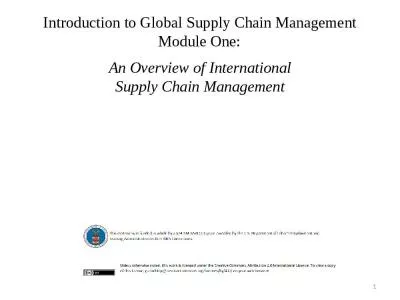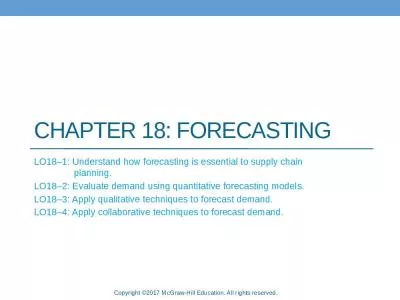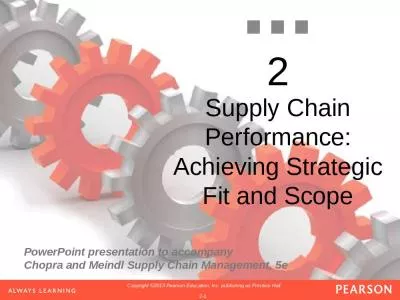Chapter 7 Demand Forecasting in a Supply Chain
Author : tatyana-admore | Published Date : 2025-06-23
Description: Chapter 7 Demand Forecasting in a Supply Chain Forecasting 1 Moving Average Ardavan AsefVaziri Based on Operations management Stevenson Operations Management Jacobs Chase and Aquilano Supply Chain Management Chopra and Meindl USC
Presentation Embed Code
Download Presentation
Download
Presentation The PPT/PDF document
"Chapter 7 Demand Forecasting in a Supply Chain" is the property of its rightful owner.
Permission is granted to download and print the materials on this website for personal, non-commercial use only,
and to display it on your personal computer provided you do not modify the materials and that you retain all
copyright notices contained in the materials. By downloading content from our website, you accept the terms of
this agreement.
Transcript:Chapter 7 Demand Forecasting in a Supply Chain:
Chapter 7 Demand Forecasting in a Supply Chain Forecasting -1 Moving Average Ardavan Asef-Vaziri Based on Operations management: Stevenson Operations Management: Jacobs, Chase, and Aquilano Supply Chain Management: Chopra and Meindl USC Marshall School of Business Lecture Notes “Those who do not remember the past are condemned to repeat it” George Santayana Spanish philosopher, essayist, poet and novelist (1863-1952) Recoded Lecture on Moving Average Slides https://www.youtube.com/watch?v=gt-YOLxJqBk&t=8s Uses of Forecasts Forecast: a prediction of the future value of a variable of interest, such as demand. Types of Forecasting Qualitative Techniques Delphi Quantitative Techniques Time Series Analysis - Analyzing data by time periods to determine if trends or patterns exist. Moving Average Exponential Smoothing Causal Relationship Forecasting - Relating demand to an underlying factor other than time. Linear - Single and Multi Variables Nonlinear - Single and Multi Variables Measures of Accuracy Mean Absolute Deviation, Tracking Signal Four Characteristics of Forecasts Forecasts are usually (always) inaccurate (wrong). Forecasts should be accompanied by a measure of forecast error. Forecasts for aggregate items are more accurate than individual forecasts. Aggregate forecasts reduce the amount of variability – relative to the aggregate mean demand. Standard Deviation of sum of two variables is less than sum of the Standard Deviation of the two variables. Long-range forecasts are less accurate than short-range forecasts. Forecasts further into the future tends to be less accurate than those of more imminent events. As time passes, we get better information, and make better prediction. Container Handling 2007: World Total 450 MTEUs San Pedro Bay (SPB) Ports- Portsts of LA/LB More than 50% of containers coming to US pass through SPB ports. More than 1/3 of the containerized product consumed in all other states pass through SPB ports. The total value of trade using the southern California trade infrastructure network is around $300 billion, creating around $30 billion in state and local taxes and around 3 million jobs or full time equivalents. SPB ports need to retain their competing edges. US-China Alternative Routes Narvik, Norway Vostochny, Russia Hong Kong, China Singapore Rotterdam, Netherlands Savannah Norfolk New York Prince Rupert, Canada Savannah Norfolk New York Los Angeles Colima, Mexico Ensenada, Mexico Competing Edges of SPB Ports Deep-water facilities for 8,000+ container ships. State-of-the-art on-dock facilities between ship and train. Intermodal transfer – Ship-train-truck. Consolidation and distribution facilities for trans-loading- from 20’ and 40’ to 56’. The last two Characteristics of all Forecasting Techniques


